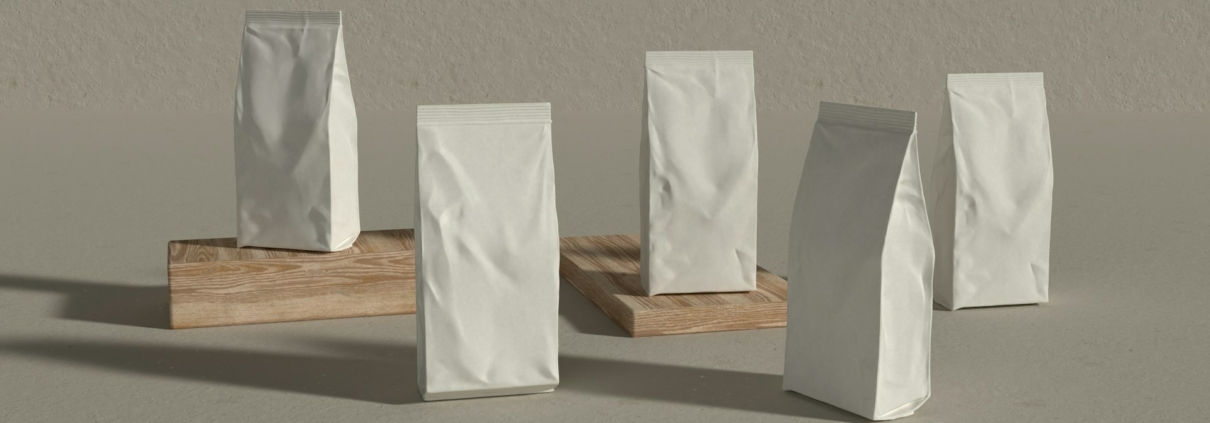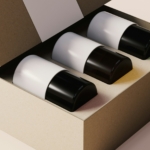Common Mistakes That Lead to Stand-Up Pouch Leaks
Few things are more disappointing than discovering leaks in stand-up pouches. All the effort involved in developing a high-quality product can quickly unravel due to faulty packaging. For small business owners, leaking pouches can damage customer trust and make a poor impression on potential retailers. Whether you’re selling coffee, dried fruit, or pet treats, the pouch must perform during production, transit, storage, and on the shelf. If it fails, your product’s image could suffer.
Stand-up pouches have become a preferred packaging option for many small and medium-sized businesses. They’re sleek, space-saving, and offer features like resealable zippers and tear notches that improve user experience. Unfortunately, poor choices or small missteps in the packaging process can lead to big issues, especially leaks. Problems with sealing, unsuitable materials, overfilling, handling errors, or weak quality checks can all lead to failures. Below, we cover the most common causes and how to prevent them.
Poor Heat Sealing Techniques
The seal is the primary barrier between your product and the outside environment. It keeps out moisture and oxygen while keeping the contents secure. If the sealing process is poorly executed, issues like air gaps, pinholes, or weak edges can emerge, often too late in the process to fix.
Some of the most frequent causes of sealing problems include:
1. Inconsistent temperature: If the heat setting is too low, the seal won’t fully form. If it’s too high, it can damage the plastic layers.
2. Under-pressure sealing: Not enough pressure during sealing can leave parts of the pouch loosely bonded, allowing leaks to form later.
3. Insufficient dwell time: The sealing bars must stay in contact long enough to create a strong bond, but rushing this step can compromise integrity.
While a pouch may look sealed at first glance, invisible weaknesses may appear over time. This is particularly risky for goods like coffee, snacks, or vitamins, where freshness and shelf life matter. A strong seal only happens with the right combination of time, pressure, and temperature calibrated for your specific material. Test seals regularly, especially when switching materials or making production adjustments. Proper calibration and consistent checks will help avoid issues that frustrate customers and damage brand loyalty.
Using Inappropriate Materials
Choosing the right pouch material is more than just comparing cost or deciding on appearance. The wrong material compromises the pouch’s durability and protection. It can result in weak seals, punctures during transport, and faster degradation from environmental exposure.
Common material-related mistakes include:
- Using lightweight films for heavy items, leading to stretching or tearing.
- Selecting films that lack resistance to the conditions your products will face, such as moisture, heat, UV exposure, or oxygen infiltration.
- Ignoring barrier properties when dealing with sensitive goods like coffee or dried herbs.
Take the case of specialty tea: it requires a laminate pouch with moisture and oxygen barriers to maintain quality. A basic thin plastic pouch may look fine, but it won’t protect the aroma or prevent spoilage. Similarly, pouches with transparent windows may enhance visual appeal but can undermine product protection if not correctly layered.
Selecting well-suited materials begins with considering product needs. Will it be stored in a warehouse or shipped in warm climates? Will it sit on shelves for extended periods? Will customers reuse the pouch? Your answers should guide material selection. If sourcing on your own creates confusion, working with a supplier who understands barrier films and applications will be worth the investment.
Overfilling the Pouches
Overfilling is one of the quickest ways to compromise your pouch’s structural integrity. When too much product is packed into a pouch, excessive pressure is forced onto the seals, and the pouch can no longer perform as designed.
Visual cues that indicate overfilling include:
- Distorted pouch shapes or bulging sides.
- Difficulty standing upright.
- Stretched zipper closures or seals that appear strained.
To minimise stress on seals and maintain consistency, always leave enough headspace. Most products do well when filled to about 90 percent capacity, allowing the pouch to close securely without stress or distortion. Uniform filling not only protects the product but also improves packing efficiency and shelf presentation. Taking the time to evaluate fill volumes across batches quickly pays off by reducing returns and complaints due to leaky or misshapen pouches.
Inadequate Quality Control
Even with the right materials and filling process, a lack of proper quality control can still result in packaging failures. Skipping checks or relying on assumptions increases the risk of sending out defective pouches. This affects the customer experience and potentially leads to product recalls or loss of business accounts.
Steps to build a strong quality control procedure include:
- Regularly testing seal strength using pressure or peel tests.
- Performing batch sampling to identify inconsistencies before shipment.
- Inspecting pouches for visible issues like tears, poor zippers, or damaged seals.
The idea here is to catch and fix small issues before they turn into large-scale problems. Assign clear quality control responsibilities within your production flow. Small businesses benefit greatly from involving team members at different stages to look out for issues. Transparent communication about recurring problems or near-misses improves processes over time and reinforces a culture of quality.
Unfit Storage and Handling Practices
Even after production is complete, packaging quality remains vulnerable. Poor storage and handling can wear down seals or distort pouch shapes, leading to leaks or bursts. Products that leave your facility in perfect condition can arrive damaged simply due to poor logistics or careless stacking.
Typical mishandling issues include:
- Storing in hot or humid places, weakening pouch adhesives or films.
- Piling up too many pouches in one spot, pressing on lower layers, and stressing the packaging.
- Rough transport conditions that cause jolts or compressions without adequate cushioning.
To reduce the risk, store packaged goods in dry, cool spaces and avoid exposing them to direct sunlight. Limit stacking height for heavier products, and use protective packaging during shipments. Training your team and any logistics partners on handling expectations can result in fewer complaints and better shelf outcomes. A leak caused in the warehouse is just as damaging as one caused by poor sealing.
Prevent Problems Before They Start
Leaky stand-up pouches can disrupt operations and damage your brand’s credibility. Understanding how sealing methods, material choice, fill levels, inspection routines, and post-production handling affect packaging integrity is central to delivering quality. Focusing on each of these elements reduces the likelihood of packaging failure and elevates the customer experience.
Packaging might seem secondary to your product, but it plays a direct role in defining how your business is perceived. Investing time in improving these areas will save money in the long term and help your brand stand tall on shelves for the right reasons. Keep your processes consistent, your materials matched to the product, and your quality checks proactive to avoid unnecessary issues. With these strategies in place, your stand-up pouches will do their job, keeping your products secure, fresh, and ready to impress.
Ensure your products shine with the right packaging solutions. Our stand-up pouch options at Star Stuff Group provide space-saving, eye-catching presentations, perfect for keeping your goods secure from shelf to customer hands. Discover how we can help elevate your brand presentation with tailored solutions that blend effectiveness with style. Let’s start enhancing your packaging together.




